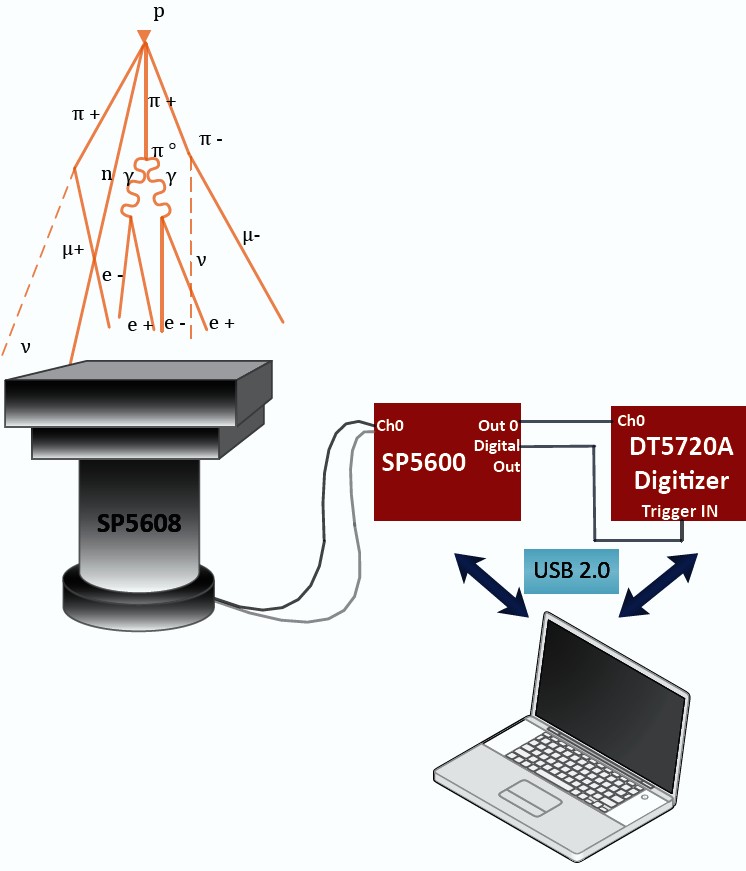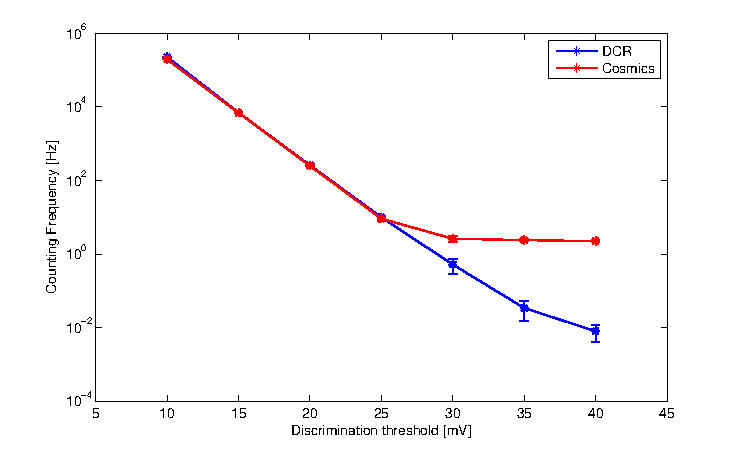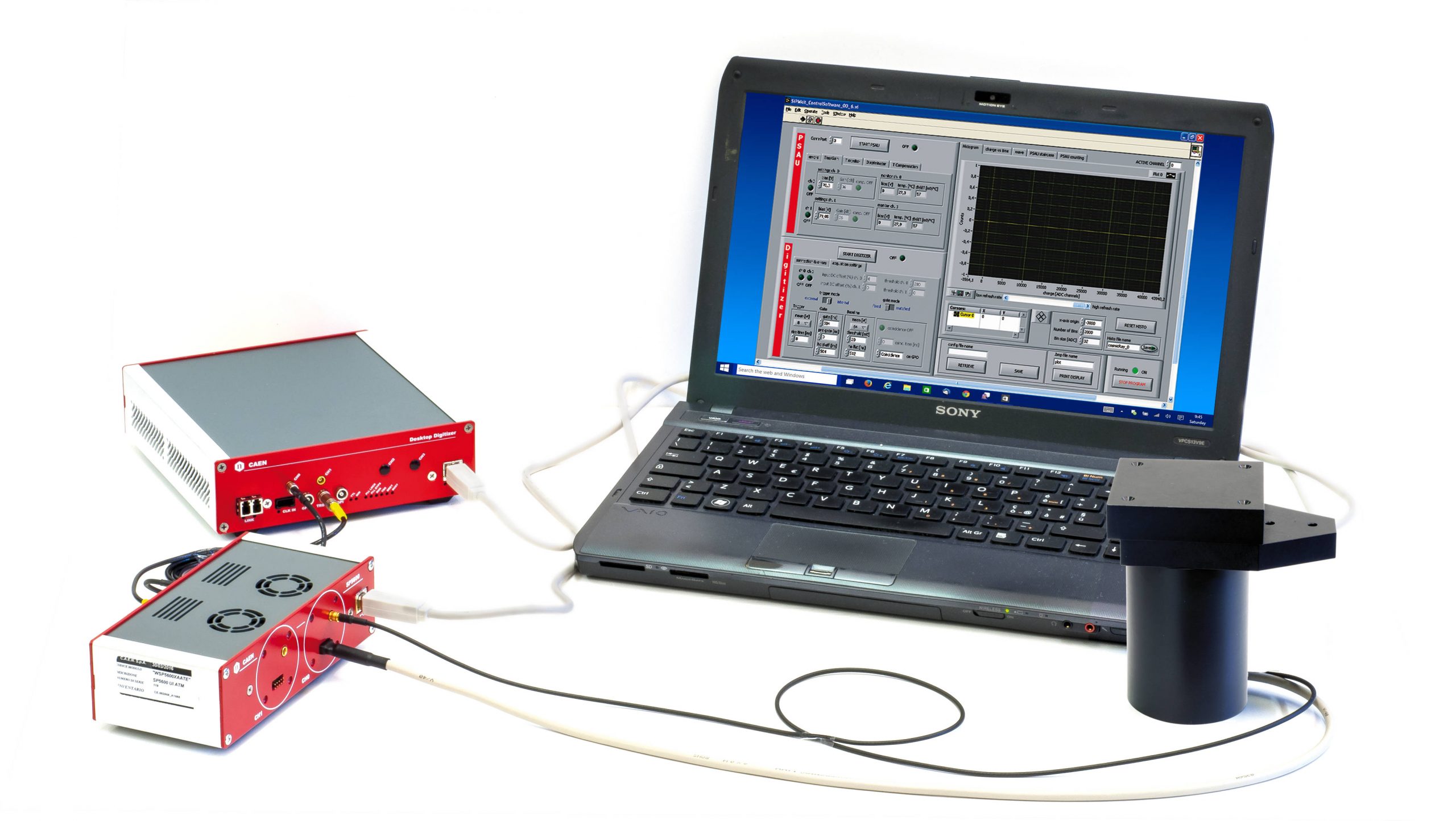| Difficult | Execution Time | Data Analysis | Radioactive Sources |
|---|---|---|---|
| No | No |
Hardware setup
This experiment guide is referred to the SP5600D educational kit. If you don’t have this kit, choose your own from the following list to visualize the related experiment guide: SG6211D – Cosmic Hunter
Equipment: SP5600D – Educational Beta Kit
| Model | SP5600 | DT5720A | SP5608 |
|---|---|---|---|
| Description | Power Supply and Amplification Unit | Desktop Digitizer 250 MS/s | Scintillating tiles |
Purpose of the experiment
Cosmic rays detection by using a system composed of a plastic scintillating tile directly coupled to a Silicon Photomultiplier detector.
Fundamentals
The muons, produced by the decay of pions and kaons generated by the hadronic interaction of the primary cosmic rays with atmospheric nuclei, are the most cosmic rays at sea level. Cosmic muons are charged particles, produced high in the atmosphere (typically 15km) with highest penetration capability in matter. Their mass (~ 200 times the electron mass), the absence of strong interactions and their long lifetime (τ ~ 2,2 x 10-6s), allow muons to cross the atmosphere and reach the Earth’s surface. The muon average energy at sea level is around 4 GeV.

Experimental setup block diagram
Carrying out the experiment
Open the SP5608 and remove the plastic scintillating tile. Close the SP5608 and connect its power cable and its MCX cable to one channel of the SP5600. Connect the two outputs of the chosen channel to DT5720A: the analog output to the channel 0 and the digital output to “trigger IN“ of the digitizer. Use the default software values or optimize the parameters to evaluate the noise contribution of the sensor, called Dark Count Rate (DCR). Measure the DCR as a function of the discrimination threshold in mV. Because of the DCR, the system has to be made sensitive to the cosmic ray flux relying on the acquisition time of the sensor signal. Switch off the power supply, open the SP5608 top, spread the optical grease on the SiPM and insert the scintillating tile. Close the support top, switch ON the power supply and restore the previous configuration parameters. Measure the counting rate scanning the values of the threshold.
Results
The cut-off threshold has a key role in the cosmic ray detection and it shall be set to reduce the random coincidence rate below the Hertz level and measure the cosmic rate.

Signal frequency as a function of discriminator threshold. The red line represents the cosmic cotribution, the black on the noise


